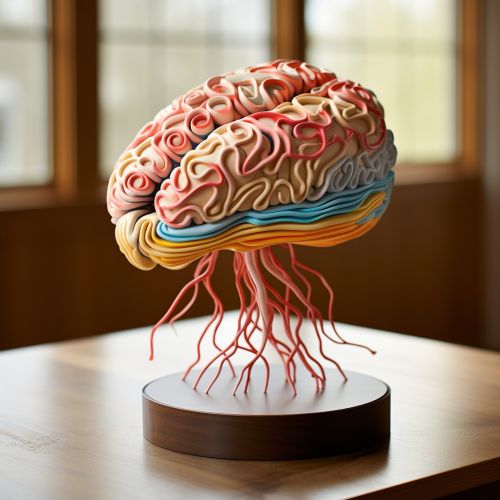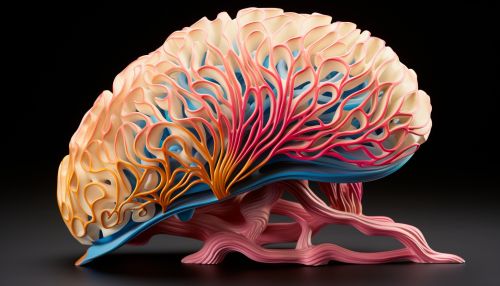Motor Cortex
Anatomy of the Motor Cortex
The motor cortex is a region of the cerebral cortex involved in the planning, control, and execution of voluntary movements. It is located in the posterior part of the frontal lobe, just anterior to the central sulcus. The motor cortex can be divided into three main parts: the primary motor cortex (M1), the premotor cortex (PMC), and the supplementary motor area (SMA). Each of these areas plays a unique role in motor function.


Primary Motor Cortex (M1)
The primary motor cortex, or M1, is the main contributor to generating neural impulses that pass down to the spinal cord and control the execution of movement. It is located in the precentral gyrus, and is shaped like a long, narrow strip running parallel to the central sulcus.
M1 contains large neurons known as Betz cells, which send long axons down the spinal cord to synapse onto the motor neurons that directly innervate muscles. The organization of M1 is somatotopic, meaning that specific parts of the body are represented in specific parts of the cortex. This is often referred to as the "motor homunculus".
Premotor Cortex (PMC)
The premotor cortex is involved in the planning and guidance of movements. It receives information about the target of a movement and the position of the body from the parietal cortex, and uses this information to organize the direction, speed, and force of the movement.
The PMC is further divided into the dorsal premotor cortex (PMd) and the ventral premotor cortex (PMv). The PMd is involved in the planning of movements based on external cues, while the PMv is involved in the planning of movements based on internal cues.
Supplementary Motor Area (SMA)
The supplementary motor area is involved in the planning and coordination of complex movements, such as sequences of movements, bilateral movements, and movements involving the hands and fingers. The SMA also plays a role in the learning of new motor skills.
The SMA is located on the medial surface of the hemisphere, just anterior to the primary motor cortex. It is involved in the initiation of movements, the control of movements that require the bilateral use of hands, and the control of movements that depend on internal cues.
Function of the Motor Cortex
The motor cortex plays a crucial role in the generation and control of voluntary movements. It receives input from various areas of the brain and spinal cord, processes this information, and sends output to the muscles to initiate and control movement.
The motor cortex is also involved in motor learning, which is the process of improving motor skills through practice. This involves changes in the strength of synaptic connections within the motor cortex, a process known as synaptic plasticity.
Disorders of the Motor Cortex
Damage to the motor cortex can result in a variety of motor disorders, depending on the location and extent of the damage. These can include paralysis, weakness, loss of fine motor control, and difficulties with coordination and movement planning.
In addition, disorders such as Parkinson's disease and Huntington's disease can affect the motor cortex and lead to motor symptoms. In these cases, the underlying cause is often degeneration of neurons in other parts of the brain that send input to the motor cortex.
